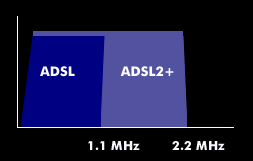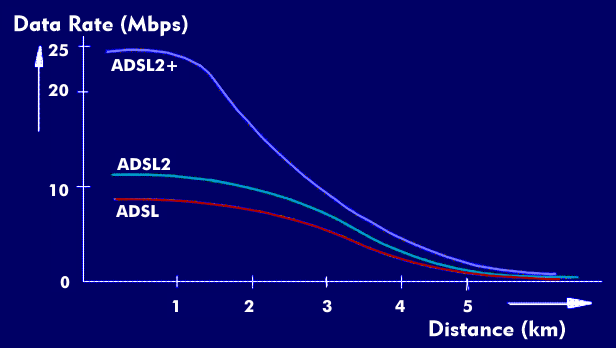ADSL2+
ADSL2+ is a DSL method standardized by the International Telecommunication Union( ITU-T) in Recommendation G.992.5, which is characterized by a higher bandwidth and range compared with the classic Asymmetric Digital Subscriber Line( ADSL). ADSL2+ divides the frequency band of 2.2 MHz into 512 channels and, like ADSL, uses the multitone method( DTM).
The resulting data rate for the downstream is a maximum of 25 Mbit/s. In the upstream, ADSL2+ operates with 64 channels and achieves data rates of up to 2 Mbit/s. It should be noted that the data rates depend on the length and thus the attenuation of the telephone cable from the local exchange to the customer. ADSL2 and ADSL2+ have a power-saving mode that puts the equipment into sleep mode when no data is being transmitted. This function reduces energy consumption.
The speeds realized in ADSL2+ can support triple-play services for voice, video and Internet communications. These include broadcast services such as Internet radio and Internet TV, but also broadband distribution services for video-on-demand, information-on-demand, computer games, Internet telephony( VoIP), etc. transmitted over two- wire lines.
The data rates realized in ADSL2+ and the distances that can be bridged can be significantly increased by means of the processes used in dynamic spectrum management( DSM), such as transmission power reduction, bundling or vectoring.


